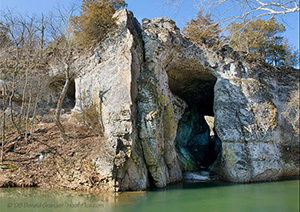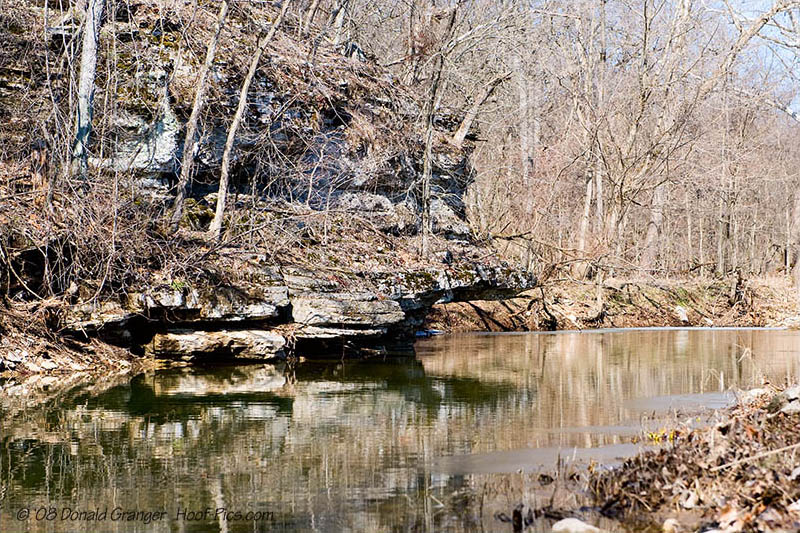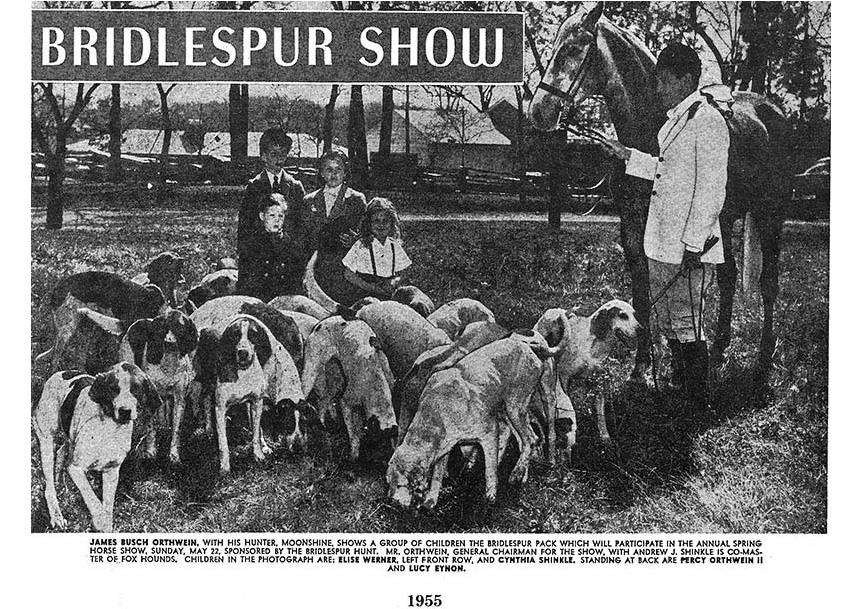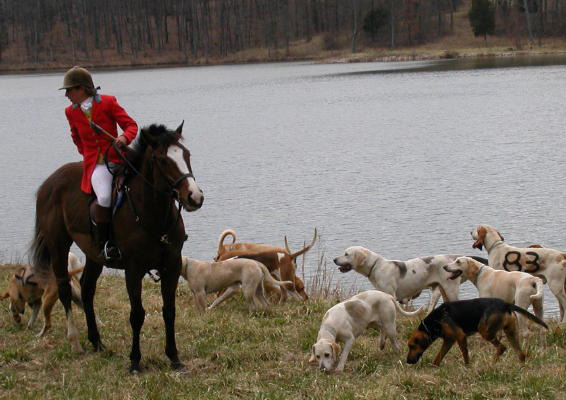Conservation
Conserving land for our future has become a large part of our focus. This page covers some highlights of our land and our efforts.
Relocating
Urban sprawl has forced Bridlespur to move twice, first in the 1960's from Huntleigh, MO to New Melle, MO. Then again in 2005 from New Melle, MO to Valley Green Lane in Lincoln County, MO. In hopes to avoid a future move, we have significantly increased our focus on conservation efforts. Bridlespur works closely with Missouri Department of Conservation, Great Rivers Land Trust and our neighbors to improve our land and expand our hunt territory.
Wildlife Habitat Management
Quality habitat is important for abundant prey species which is essential for healthy predator populations. There are many initial considerations when planning for wildlife. Key factors for good habitat are food, water and cover. Vegetation largely determines the types of wildlife that can live in an area. Surface water can be a limiting factor for some types of wildlife. Adequate cover from the elements is essential. A diversity of food types is also very desirable.
Managing the vegetation is key to creating or enhancing habitat. Two important elements of managing vegetation are manipulating natural succession and controlling invasive exotics. Clean, well-manicured land typically suggests limited wildlife value. Periodic disturbance such as light discing or prescribed burns create bare ground and can be used to set back grasses and stimulate forbs in order to keep these areas in good condition for wildlife.
Increasing adequate cover for wildlife is increasingly important. We actively identify and promote natural thickets of small trees and native shrubs along field edges. Herbaceous strips of wildlife friendly grasses and forbs are planted along the edge of fields and are avoided during nesting season. Desirable species are ones that create thick cover or produce desirable fruits such as wild plum, American hazelnut, shrub dogwood, elderberry, blackberry and sassafras.
Sandy Creek Natural Tunnel
 The Sandy Creek Natural Tunnel is a natural tunnel in Burlington limestone. It was created by stream piracy when a stream branch took an underground shortcut to Sandy Creek through a short cave. The resulting tunnel is about 12 feet wide and 16 feet high which steeply opens into a 50-foot cliff overlooking Sandy Creek.
The Sandy Creek Natural Tunnel is a natural tunnel in Burlington limestone. It was created by stream piracy when a stream branch took an underground shortcut to Sandy Creek through a short cave. The resulting tunnel is about 12 feet wide and 16 feet high which steeply opens into a 50-foot cliff overlooking Sandy Creek.
Sandy Creek
 Sandy Creek, which runs along the eastern boundary of the area is a good example of a high quality headwaters stream. The creek, which flows into the North Fork of the Cuivre River, is clear with a bottom of sand and gravel. Large softshell turtles, southern leopard frogs and signs of beaver can be seen in and along the creek. In summer, rough-winged swallows dart in and out of Sandy Creek Natural Tunnel and swoop over the creek in search of insects. Turkey vultures patrol the area from higher in the sky.
Sandy Creek, which runs along the eastern boundary of the area is a good example of a high quality headwaters stream. The creek, which flows into the North Fork of the Cuivre River, is clear with a bottom of sand and gravel. Large softshell turtles, southern leopard frogs and signs of beaver can be seen in and along the creek. In summer, rough-winged swallows dart in and out of Sandy Creek Natural Tunnel and swoop over the creek in search of insects. Turkey vultures patrol the area from higher in the sky.
Limestone Bluff
South of Sandy Creek Natural Tunnel, along the creek is a moist limestone bluff. This habitat supports a variety of plant species including columbine, bluebells, bloodroot, Dutchman’s breeches, and several ferns. False helleborine (Veratrum wood) grows at the base of this bluff. This plant was once considered rare, although it is actually not uncommon in Missouri.
Natural Glade
The limestone bluff (containing the tunnel) is topped by a small limestone glade. Although glades are rare in most of the Glaciated Plains Natural Division, small glades such as this are typical of the Lincoln Hills Section. This particular glade is special because upon it grows widow’s cross (Sedum pulchellum), a tough ground covering plant that lives on shallow soil typical of cedar glades. Sandy Creek Glade is one of the northernmost locations for this diminutive plant in Missouri. Other plants found on the glade include red cedar, blue ash, chinquapin oak, prickly pear cactus, little bluestem grass, sideoats grama grass and shooting star.








